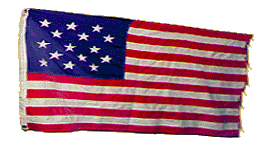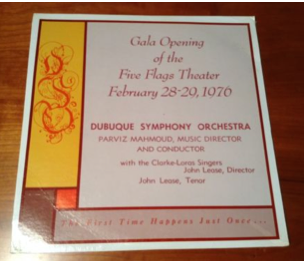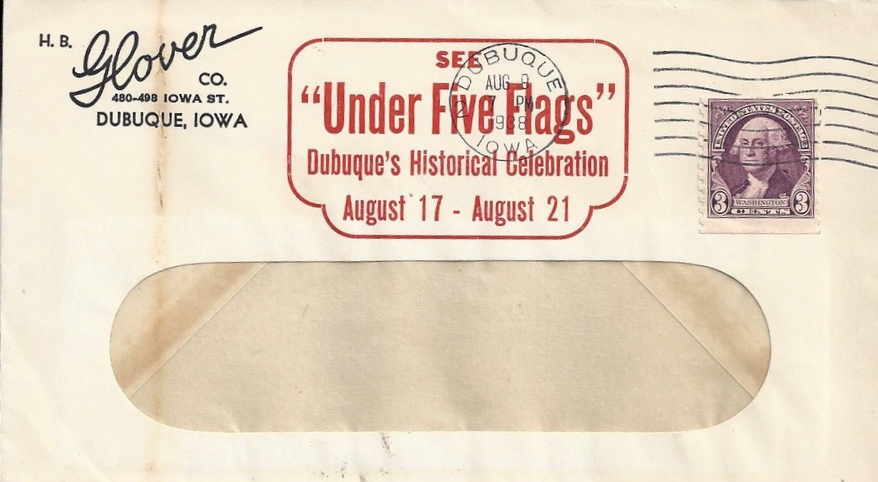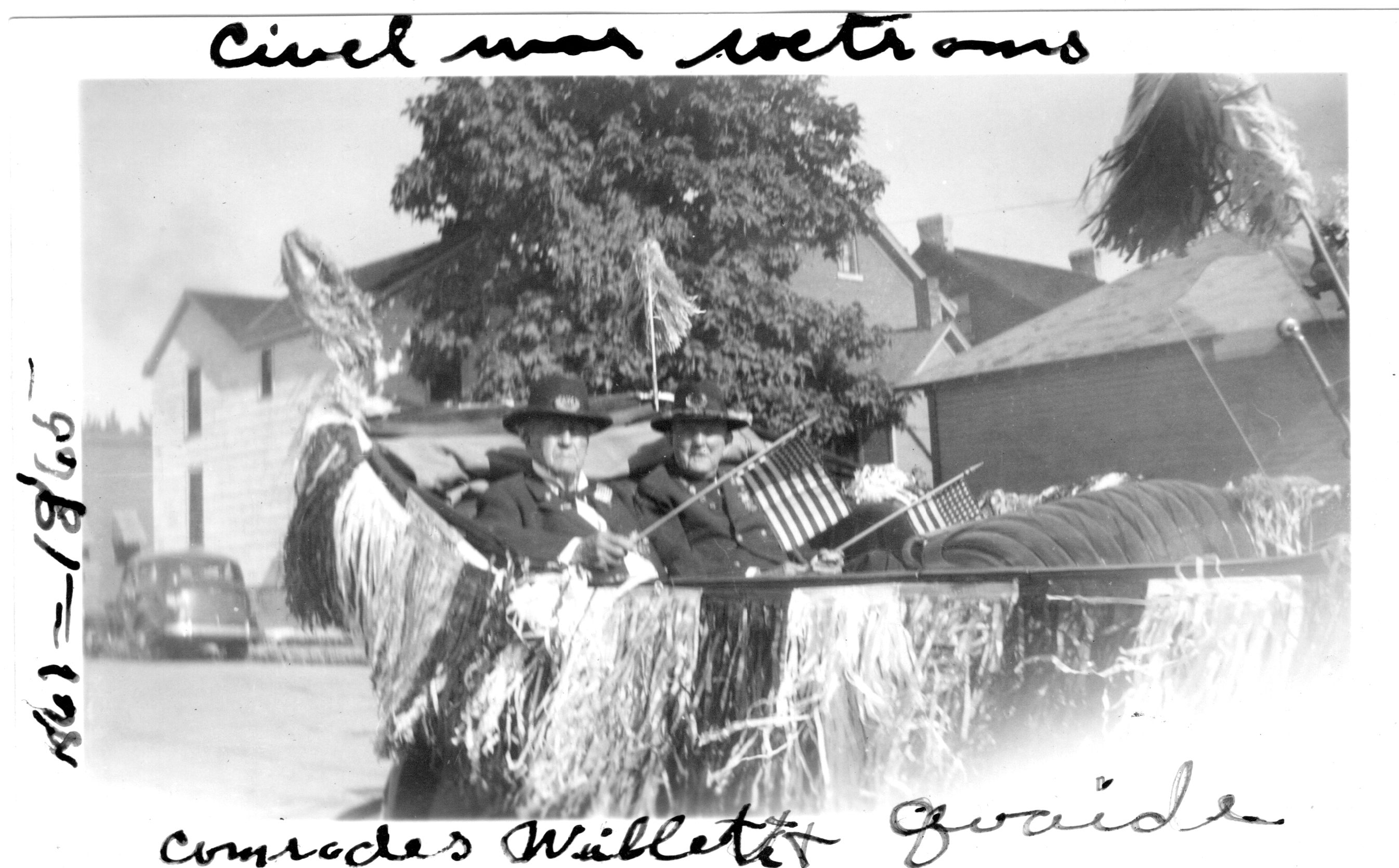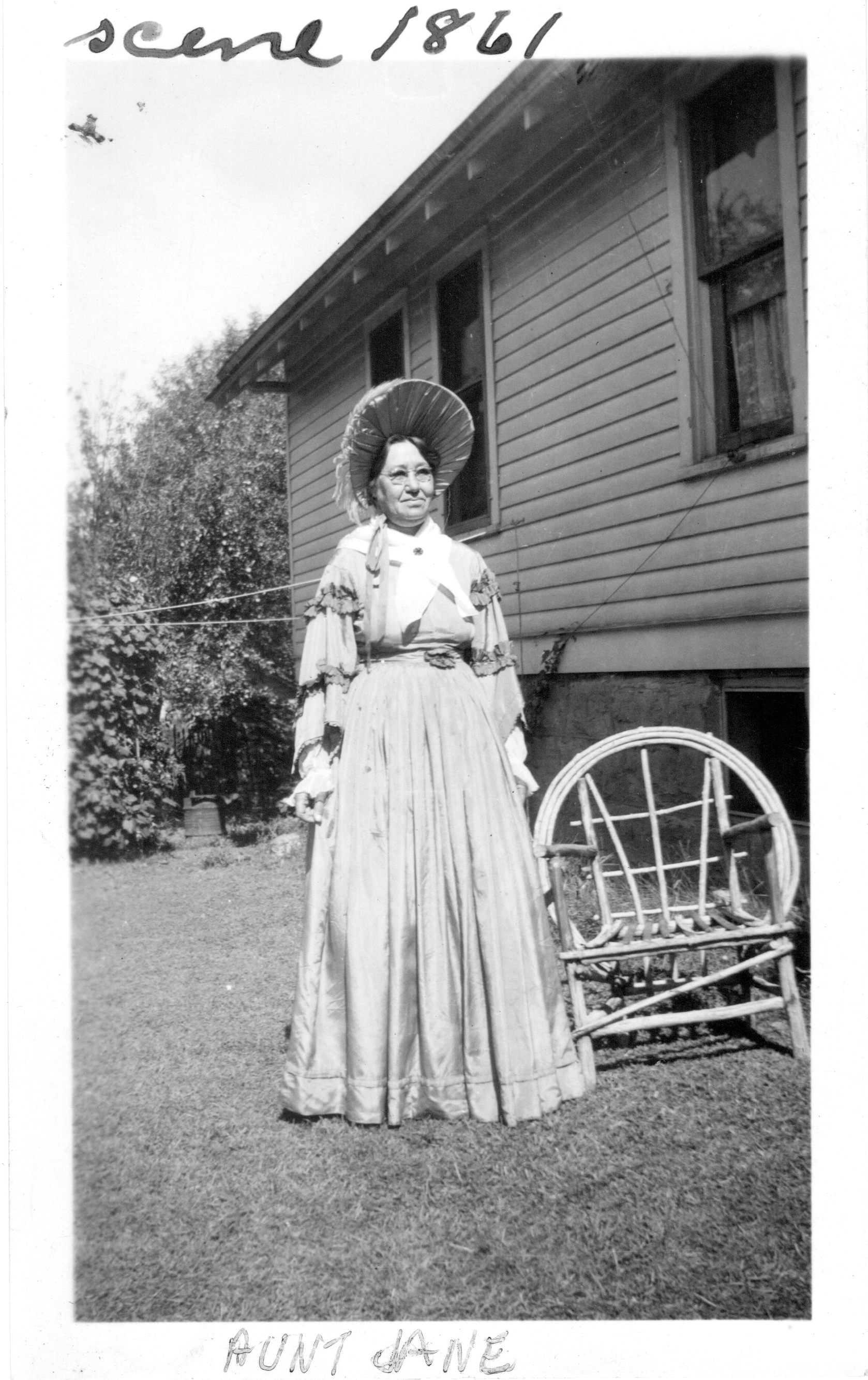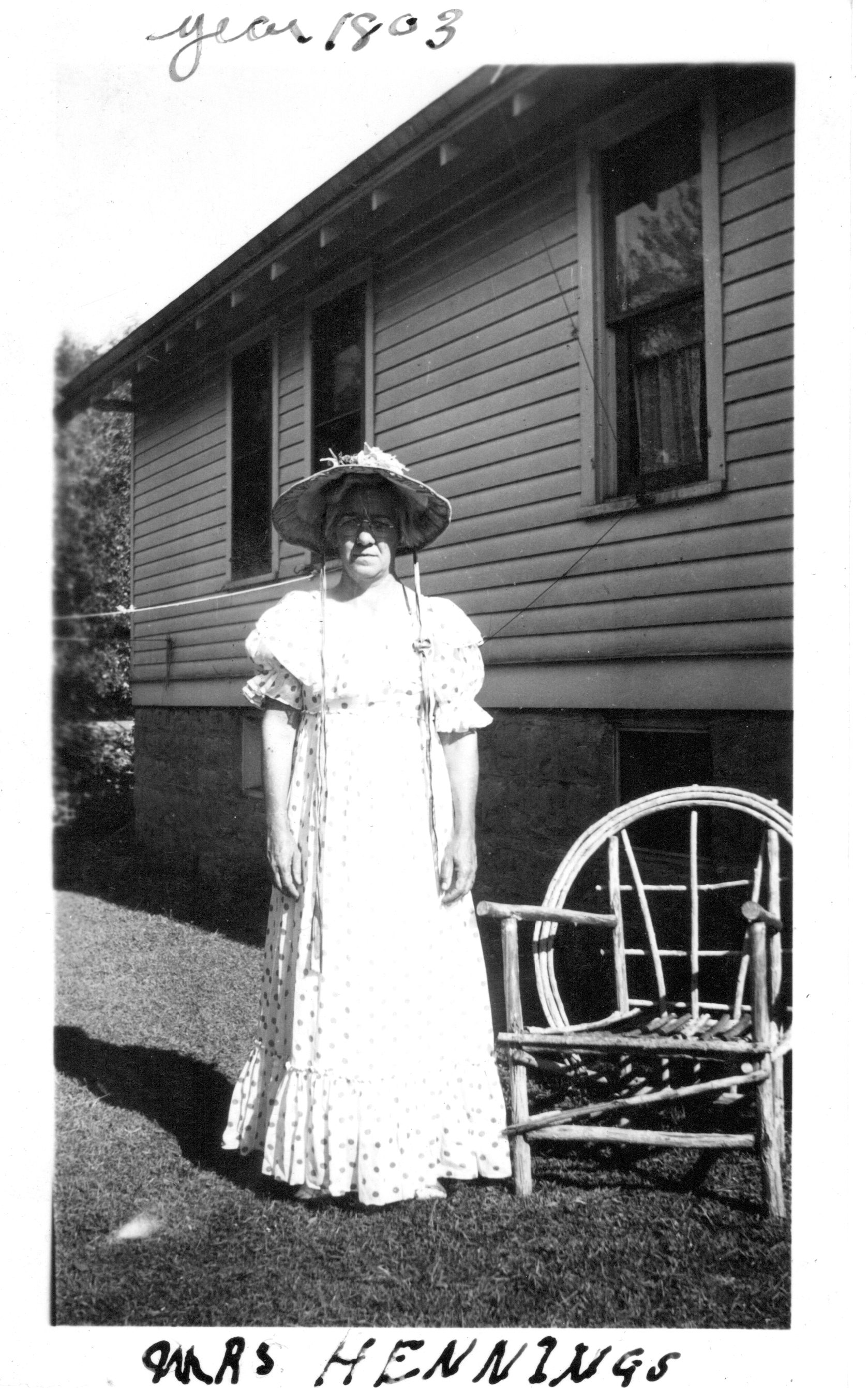Encyclopedia Dubuque
"Encyclopedia Dubuque is the online authority for all things Dubuque, written by the people who know the city best.”
Marshall Cohen—researcher and producer, CNN
Affiliated with the Local History Network of the State Historical Society of Iowa, and the Iowa Museum Association.
FIVE FLAGS (name)
FIVE FLAGS (name) The term "Five Flags" has been traced to the 150th anniversary of the arrival of Julien DUBUQUE and the 100th anniversary of the formation of the Iowa Territory. Held in 1938, the sesquicentennial/ centennial celebration was organized as a five-day pageant called "Under Five Flags."
In 1493, the year after Christopher Columbus discovered the West Indies, the pope granted Spain all the lands Columbus touched believing he had found a continent. Drawing a line from pole to pole, the pope declared that land east of the line claimed by no other Christian country belonged to Portugal; land to the west belonged to Spain. (1)
Although Marquette & Joliet explored the MISSISSIPPI RIVER in 1673, it was Robert Chevalier (of the estate of La Salle), commonly known in history as Robert de la Salle or simply La Salle, who claimed the Mississippi Valley for France in 1682. La Salle named the territory "Louisiana" and described it as all the country drained by the "River St. Louis" (Ohio) and the "Colbert River," (Mississippi). This territory extended from the Alleghenies to the Rocky Mountains and from the source of the Mississippi to its mouth. (2)
In 1763 at the end of the French and Indian War ("Seven Years War" in Europe), the Treaty of Paris was signed. France lost Canada and all of its land east of the middle of the Mississippi River. Unsure of its ability to hold its remaining American possessions, France secretly ceded the remainder of Louisiana to Spain. The open transfer occurred in 1769. Arrangements were made in 1800 by the Treaty of San Ildelfonso for Spain to cede the land back to France. (3)
In 1779 Spain had joined France in support of the American Revolution. In 1780 a series of British military operations were carried out to clear Spanish influence from Quebec to the Gulf of Mexico. Capt. Henry Bird, with a force from Detroit, was directed to attack George Rogers Clark at the Falls of the Ohio. General John Campbell, 5th Duke of Argyll, from Pensacola, after taking New Orleans was to proceed up the Mississippi to Natchez and join a third force that descended the Illinois River and captured St. Louis. Capt. Charles de Langlade was to lead the force down the Illinois, which was to split up and also control Vincennes. None of the missions were successful, but there was a slight break in Spanish rule of Louisiana.
Faced with the costs of military activity in Europe and slave rebellions in its North American holdings, Emperor Napoleon of France in 1803 chose to sell the Louisiana Territory to the United States. On April 30, 1803, the United States paid France nearly $12 million and assumed debts of the French government of an additional $3 million. The United States formally took possession of Louisiana on December 20, 1803. Upper Louisiana, including Iowa, however, was not transferred until March, 1804. (4) The five flags, therefore, were the Fleur de Lis of France (1682–1762), the Royal Flag of Spain (1762–1800), the Union Jack of Great Britain (1780, during the American Revolution), the French Republic Flag of Napoleon (1800-1804) and American flag (1804–Present).
From 1673 to 1763 the fleur de lis of the Bourbon kings of France flew over the area of Dubuque. The flag of Champlain, a blue field with three gold fleurs-de-lis carried by Sieur de La Salle in 1682, was used when he claimed the valley of the MISSISSIPPI RIVER for King Louis XIV of France.
From 1763 to 1803 the flag belonging to Spain flew over this region. An exception to this came in 1780 when the flag of Great Britain rose over the MINES OF SPAIN when the British captured them as part of the plan to destroy settlements of French along the Mississippi. The British flag of that time featured a white "X" and red cross on blue. This was known as the "Grand Union" flag.
Spain was given control of lands west of the Mississippi after the defeat of the French by the British in the French and Indian War. The Spanish flag was divided into four rectangles. The lower left and upper right displayed a red lion on a white field. The upper left and lower right featured a gold castle on a red field.
Spain had to cede the territory back to France through terms of the Treaty of San lldefonso signed by France and Spain in 1800. In the treaty France gave the territory to Spain to avoid losing it to England. The fourth flag, again belonging to France, was now a red, white and blue banner.
The fifth flag belonged to the United States that gained control of the territory through the LOUISIANA PURCHASE of 1803. The American flag at that time had fifteen stars and fifteen stripes, one for each of the states.
See: File:A000387 Under Five Flags program.pdf
Under Five Flags Pageant pictures--courtesy of Timothy Ahlgrim (Note: There were no notes on the photographs other than shown.)
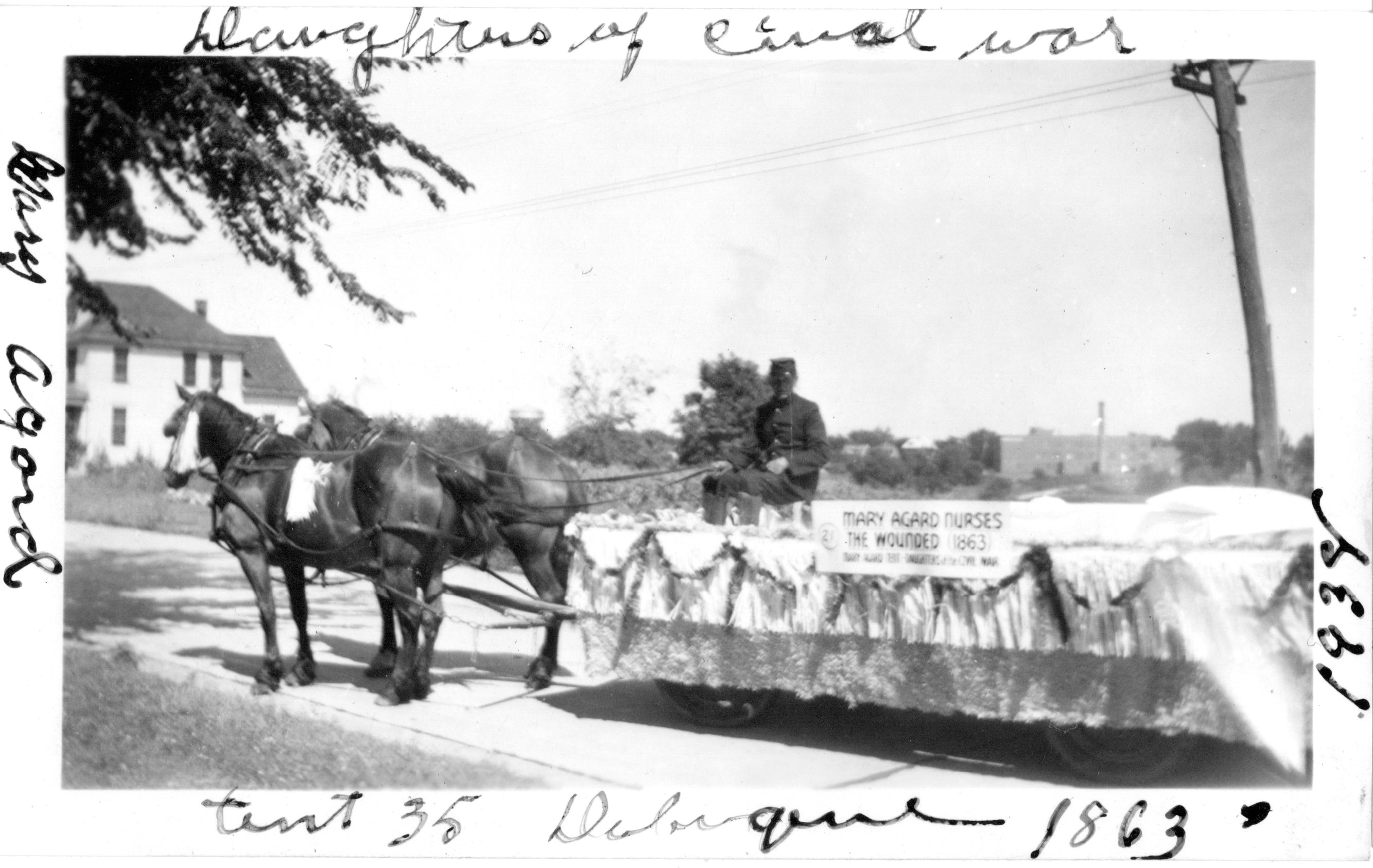
---
Source:
PDF courtesy of Timothy Ahlgrim





